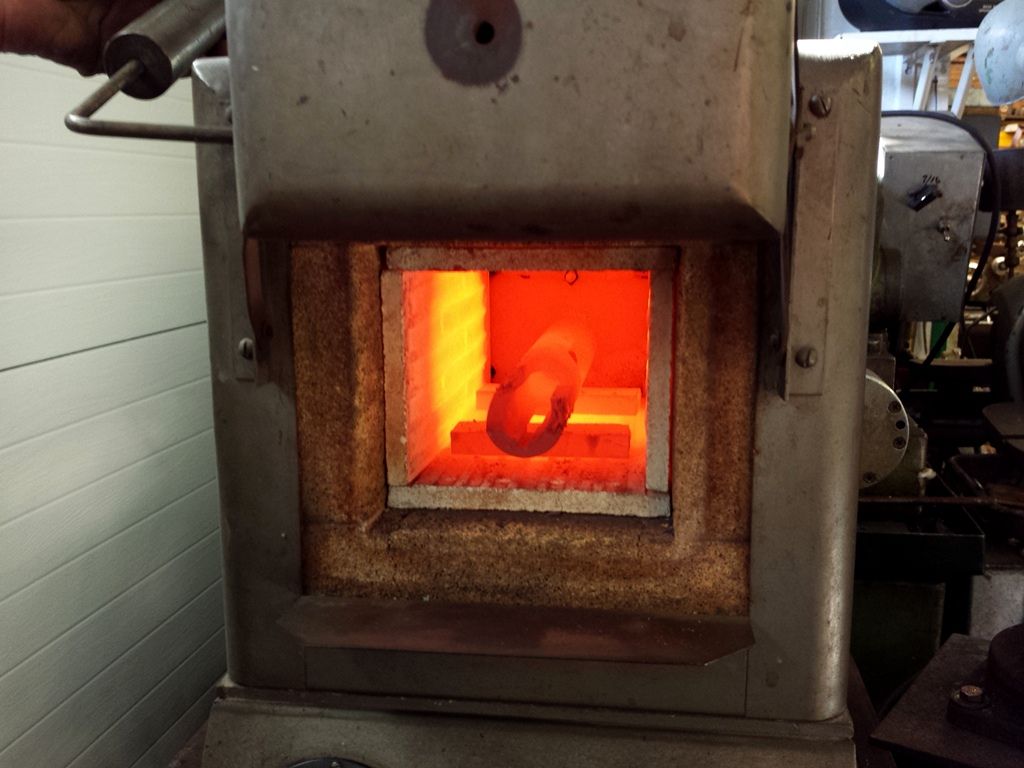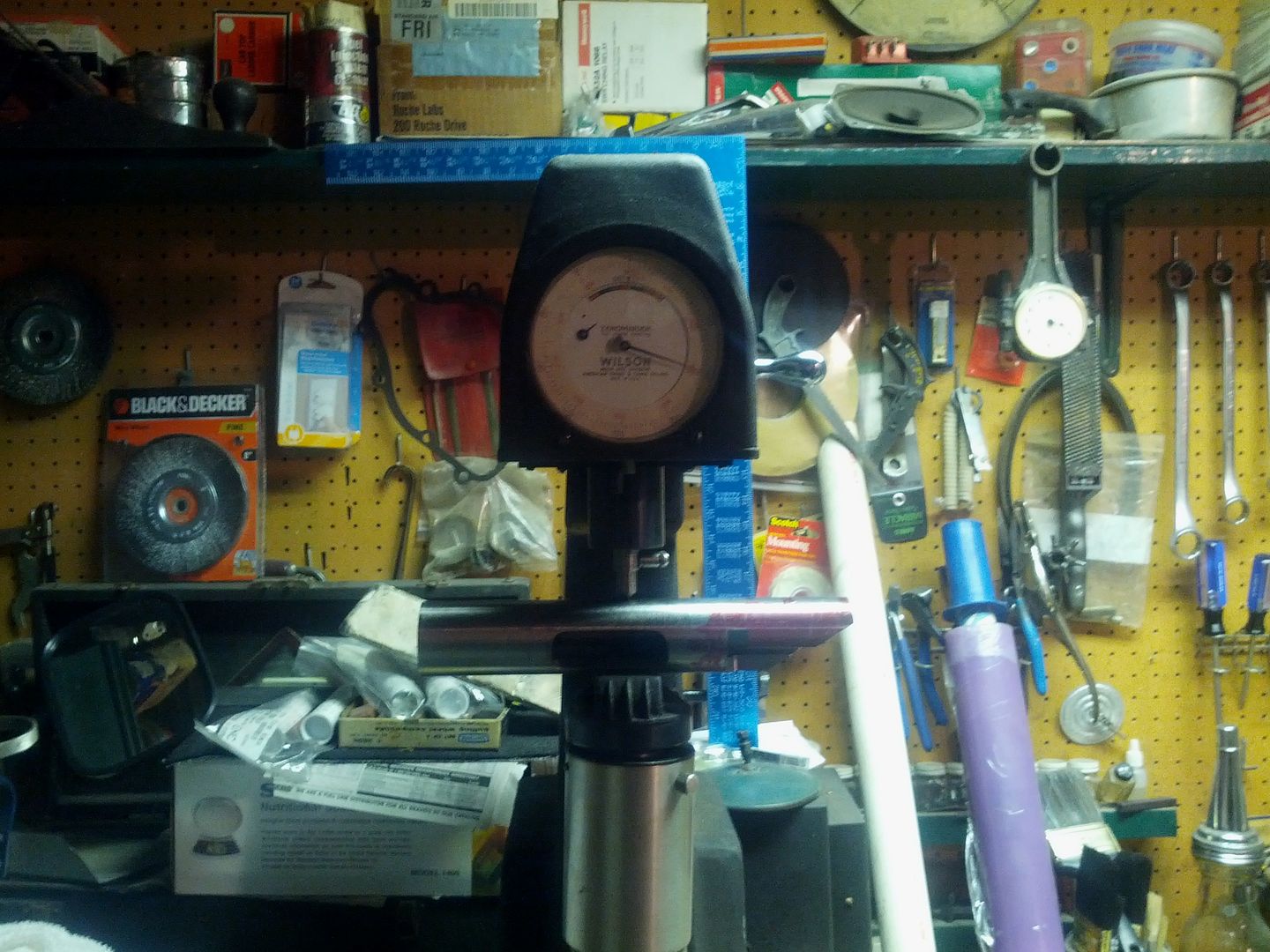jackie schmidt
New member
Many of us remember the Farley Fiasco, where the lugs (literally), fell off of a bolt, a few more had some problems, and suddenly everybody was visiting the local Heat Treater with a Rockwell Hardness Tester.
Two shooters and myself took our's, about eight total, over to Lone Star Heat Treat in Houston, and the bolts were all over the place in Heat Treat, some as low as 44, and one, (my LV), was at 53.
Jim was using S-7 ToolSteel, which can make a great bolt, except the heat treat procedure is extremely critical. Temperatures are measured in increments that might be beyond someone without the best in equipment.
Many shooters sent their bolts back to Farley to have the temper redrawn, I left mine at that 53. (My other Farley was at 48). These are still the same actions I shoot now, thousands of rounds have gone through both with no ill affects. By my studying, 53 is right on the upper end on S-7 for this application.
I never heard what the RC number was on that bolt that failed.
If you think about it, since the late 1800's, there have been millions and millions of bolt action rifles produced, both military and civilian. What percentege have ever had a bolt fail? I would suspect the number is so low, it would not even register on a chart. We have all seen pictures of actions with the barrel split and the action body destroyed. But the two lugs still intact.
I am not a fan of the multi lug design, where numerous smaller lugs take the place of two large lugs. On paper, the strength is there. But in real world application, every thing has to be perfect every time in order to avoid an overload that could result in failure. On a two lug, even if an anomaly happens, such as an uneven load, that one big lug taking the pressure still has the strength to withstand. With smaller multi lugs, if an anomaly occurs, and only one row of those small ligs are exposed to the pressure, their yield strength might be compromised.
Cracking in a part that is subjected to high, and repeated, shock loads is usually a sign of poor material selection, too high of a RC number resulting in low ductility for the material selected, a stress riser in a critic lie area, or an undue load placed on a particular section of the part.
The first two can be fixed by selecting another material or being more meticulous in the heat treating procedures. The third, you have to re-think your design.
Historically, bolts have been made of some type of chrome moly steel, such as 4140. Some custom manufacturers use 4340, which possesses a higher ductility at the same strength level along with a better end quench hardenability.. There are multitudes of variations of both, with traces of different alloying elements to enhance performance in a particular application.
Did anyone take a picture of the cracks in this particular action?
Two shooters and myself took our's, about eight total, over to Lone Star Heat Treat in Houston, and the bolts were all over the place in Heat Treat, some as low as 44, and one, (my LV), was at 53.
Jim was using S-7 ToolSteel, which can make a great bolt, except the heat treat procedure is extremely critical. Temperatures are measured in increments that might be beyond someone without the best in equipment.
Many shooters sent their bolts back to Farley to have the temper redrawn, I left mine at that 53. (My other Farley was at 48). These are still the same actions I shoot now, thousands of rounds have gone through both with no ill affects. By my studying, 53 is right on the upper end on S-7 for this application.
I never heard what the RC number was on that bolt that failed.
If you think about it, since the late 1800's, there have been millions and millions of bolt action rifles produced, both military and civilian. What percentege have ever had a bolt fail? I would suspect the number is so low, it would not even register on a chart. We have all seen pictures of actions with the barrel split and the action body destroyed. But the two lugs still intact.
I am not a fan of the multi lug design, where numerous smaller lugs take the place of two large lugs. On paper, the strength is there. But in real world application, every thing has to be perfect every time in order to avoid an overload that could result in failure. On a two lug, even if an anomaly happens, such as an uneven load, that one big lug taking the pressure still has the strength to withstand. With smaller multi lugs, if an anomaly occurs, and only one row of those small ligs are exposed to the pressure, their yield strength might be compromised.
Cracking in a part that is subjected to high, and repeated, shock loads is usually a sign of poor material selection, too high of a RC number resulting in low ductility for the material selected, a stress riser in a critic lie area, or an undue load placed on a particular section of the part.
The first two can be fixed by selecting another material or being more meticulous in the heat treating procedures. The third, you have to re-think your design.
Historically, bolts have been made of some type of chrome moly steel, such as 4140. Some custom manufacturers use 4340, which possesses a higher ductility at the same strength level along with a better end quench hardenability.. There are multitudes of variations of both, with traces of different alloying elements to enhance performance in a particular application.
Did anyone take a picture of the cracks in this particular action?
Last edited:




